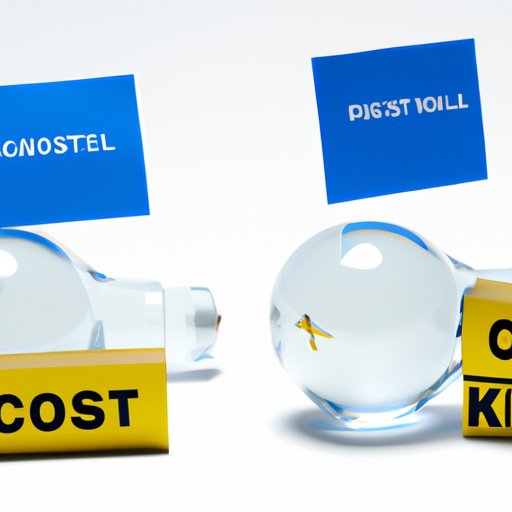
I. Introduction
Running a successful business involves many important factors, one of which is understanding and managing variable costs. Variable costs are costs that fluctuate with changes in production levels or business activity. It’s crucial for businesses to pay attention to variable costs as they can have a significant impact on pricing, profit, and overall business strategy. In this article, we will provide readers with a comprehensive guide on how to find, identify, and analyze variable costs in their businesses.
II. Defining Variable Cost
Variable costs are expenses that change with the level of activity in a business. These costs are directly proportional to changes in production levels—they increase as production increases and decrease as production decreases. Unlike fixed costs, which do not change regardless of the level of production, variable costs are flexible and can be controlled by adjusting production and business operations.
It’s important for businesses to separate variable costs from fixed costs to accurately calculate profits and determine pricing strategies.
III. Importance of Identifying Variable Costs
Understanding variable costs is crucial for decision-making related to pricing, profit, and overall business strategy. Identifying variable costs allows businesses to determine their break-even level of production, which is the level of production at which the business makes neither a profit nor a loss. This knowledge can inform pricing strategies and help businesses achieve profitability goals.
Moreover, identifying variable costs can help businesses make informed decisions about cost-cutting measures. By analyzing variable costs, businesses can identify their key cost drivers and take steps to manage and reduce those costs.
IV. Common Examples of Variable Cost
Variable costs are present in every industry, and some commonly found variable costs include:
- Raw material costs
- Labor costs
- Transportation costs
- Utilities
- Commissions or bonuses
These costs can vary based on changes in production levels or business activity. For example, labor costs may increase if a business needs to hire more workers to meet a sudden increase in demand. Raw material costs may vary if the cost of materials increases due to market fluctuations.
V. Analyzing Variable Costs
Mathematical techniques can help businesses calculate and analyze variable costs. Two common methods are variance analysis and break-even analysis.
Variance analysis involves comparing actual variable costs to expected variable costs. This analysis can help businesses identify areas of inefficiency and take steps to improve production and reduce costs.
Break-even analysis involves calculating the level of production required to cover all business costs, including variable costs and fixed costs. This analysis can help businesses determine their pricing strategy and make informed decisions about production levels.
VI. Tips for Reducing Variable Costs
Reducing variable costs can have a significant impact on a business’s bottom line and increase profitability. Here are some ways businesses can reduce variable costs:
- Optimizing production processes to reduce waste and increase efficiency.
- Outsourcing processes to low-cost suppliers.
- Automating tasks to reduce labor costs.
- Negotiating contracts with suppliers to reduce the cost of goods.
- Implementing cost-saving measures such as energy-efficient technology and recycling programs.
VII. Case Studies
Three businesses that successfully managed their variable costs include:
1. Malco Automotive
Malco Automotive, a manufacturer of automotive parts, implemented a lean manufacturing process to optimize production and reduce variable costs. By improving production efficiency and reducing waste, they were able to reduce variable costs by 15%.
2. XYZ Clothing Company
XYZ Clothing Company, a clothing manufacturer, outsourced its fabrication process to a low-cost overseas supplier. This move reduced the cost of fabric by 25% and reduced their overall variable costs by 12%, leading to increased profitability.
3. Eco-Friendly Solutions
Eco-Friendly Solutions, a small business that sells energy-efficient appliances, implemented a recycling program that reduced the cost of disposal and waste management. This savings allowed them to reduce product prices and increase sales volume, ultimately leading to a 20% increase in profits.
VIII. Conclusion
Variable costs play a crucial role in pricing, profit, and overall business strategy. By understanding and managing variable costs, businesses can make informed decisions about production levels, pricing strategies, and cost-saving measures. We hope this comprehensive guide has provided readers with valuable information and tips on how to find and analyze variable costs in their businesses.





